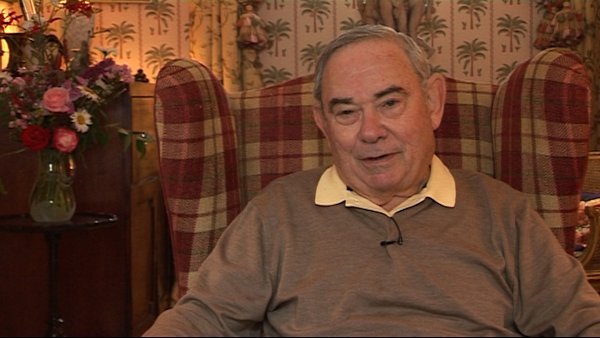NEXT STORY

Working with cancer-causing viruses
RELATED STORIES

NEXT STORY

Working with cancer-causing viruses
RELATED STORIES


|
Views | Duration | |
|---|---|---|---|
| 41. The world's first live virus vaccine | 97 | 00:35 | |
| 42. Jonas Salk | 107 | 00:43 | |
| 43. Creating sterile rooms | 60 | 01:43 | |
| 44. 'The golden era of virology' | 64 | 02:43 | |
| 45. The early days of cytogenetics | 60 | 02:04 | |
| 46. Working with cancer-causing viruses | 79 | 02:05 | |
| 47. Studies of normal human tissue | 88 | 01:18 | |
| 48. The immortality of cancer cells | 133 | 01:55 | |
| 49. Can cells live forever? | 150 | 01:15 | |
| 50. How to isolate your own cells | 90 | 02:28 |


Having set up the laboratory that I was hired to prepare, and after several months having it running properly, I learned from Hilary that he was looking for someone who was skilled in cytogenetics. At this time we now understood clearly that humans didn't have 48 chromosomes, they had a mere 46. And consequently that gave rise to a whole new field of what we call cytogenetics, that is looking for chromosome anomalies, that is if you can stain and look at the chromosomes individually and determine whether parts of them are missing, and that became possible very quickly, that you could trace those changes to several kinds of human pathologies. It is now a huge field, but at that time it was in its embryonic stages. And for... because of the relationship between cell culture and virology, which as I said earlier at that time gave birth to the subsequent 10 years of the golden age of virology, when the virologists and cell culturist married and gave forth all of the modern vaccines that we have today, virtually all of them.
As a consequence of Hilary's interest in hiring someone with that kind of background I suggested that he contact Paul Moorhead who was still at Charlie Pomerat's lab in Texas, he did, and the result was that he hired Paul, and Paul established a lab at Wistar which later became very important for my work, my subsequent work.
Leonard Hayflick (b. 1928), the recipient of several research prizes and awards, including the 1991 Sandoz Prize for Gerontological Research, is known for his research in cell biology, virus vaccine development, and mycoplasmology. He also has studied the ageing process for more than thirty years. Hayflick is known for discovering that human cells divide for a limited number of times in vitro (refuting the contention by Alexis Carrel that normal body cells are immortal), which is known as the Hayflick limit, as well as developing the first normal human diploid cell strains for studies on human ageing and for research use throughout the world. He also made the first oral polio vaccine produced in a continuously propogated cell strain - work which contributed to significant virus vaccine development.
Title: The early days of cytogenetics
Listeners: Christopher Sykes
Christopher Sykes is a London-based television producer and director who has made a number of documentary films for BBC TV, Channel 4 and PBS.
Tags: The Wistar Institute, Paul Moorhead, Hilary Koprowski, Charles Pomerat
Duration: 2 minutes, 4 seconds
Date story recorded: July 2011
Date story went live: 08 August 2012